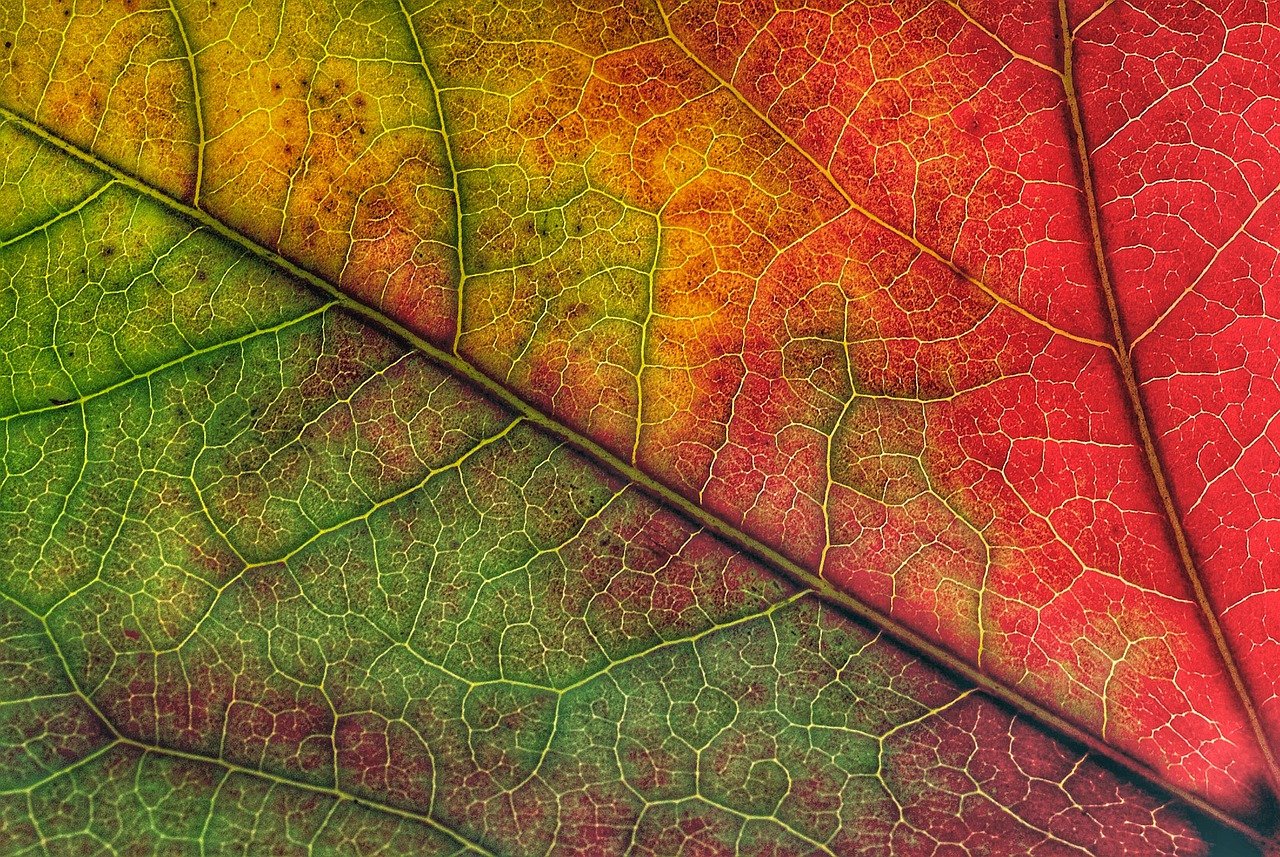I can feel it in the air, see it in the changing landscape. Fall is here.
The days grow shorter. The shadows grow longer. The sycamores are turning golden brown, the bird of paradise are full of flowers, the chaparral is dry and fully dormant, the sage extra pungent. Soon the cottonwoods in the San Diego River bed running through Mission Valley will be yellow, and the liquid ambers in your yard a deep red.
Want even more color? Drive up to Julian or further up into the eastern Sierra mountains around Bishop.
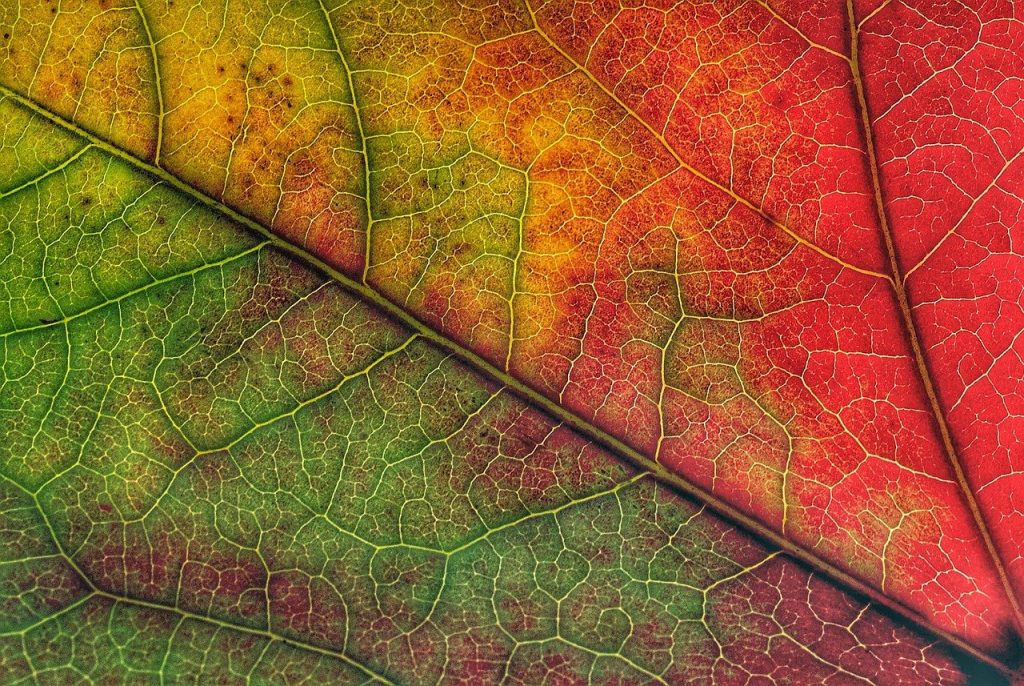
Good Earth Plant Company loves fall. We’ll tell you why. Photo: Pixabay
Fall is my favorite season. It doesn’t hurt that my birthday and Good Earth Plant Company’s anniversary both occur in the fall: October 25 and November 1. Mark your calendar now.
So many people think San Diego doesn’t have “seasons.” It’s true the changes seem nonexistent and are now obscured by climate change and warming temperatures. It will reach 90 degrees in San Diego the first weekend of fall. But it’s always been true that we enjoy “Locals Summer” after Labor Day with some of the nicest weather of the year – just as long as we avoid seasonal wildfires.
You might not be feeling the first day of fall arriving today precisely at 6:03 p.m., but Nature knows. Even your indoor plants know it’s fall. They also know winter is coming.
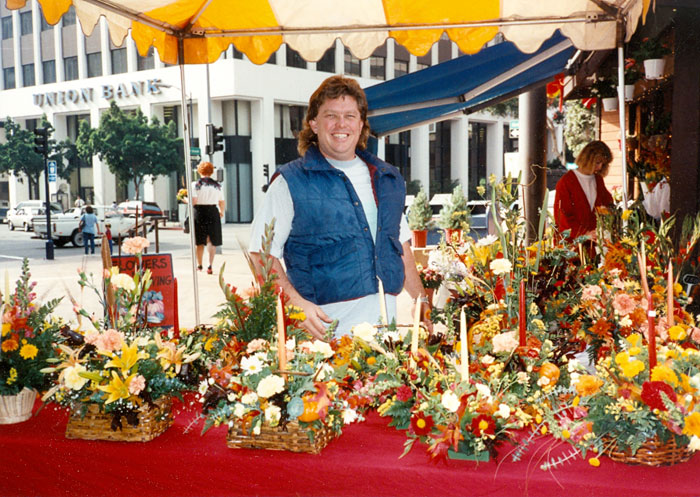
Even back in 1980 when I was showing off my mullet, Good Earth Plant Company leaned into all the good things about fall including our fall floral displays. Photo: Jim Mumford
Part of the reason we love fall in temperate climates is that it’s our busy plant care planning and planting season. Unlike cooler climates where people long for spring after the winter snow, fall is the ideal time to plant outdoors and to give your indoor plants a little time and attention for a last burst of healthy growth before they settle in for the cooler months with less sunshine.
You know you’re supposed to get an annual healthcare checkup every year. It helps you catch any health problems early, making them easier to treat. The fall season is the perfect time for you to give your plants their annual checkup for the same reason.
Follow the same checklist our Good Earth Plant Company plant stylists use to detail and keep our client’s plants healthy and looking their best.
Tidy Up Like a Pro Plant Stylist
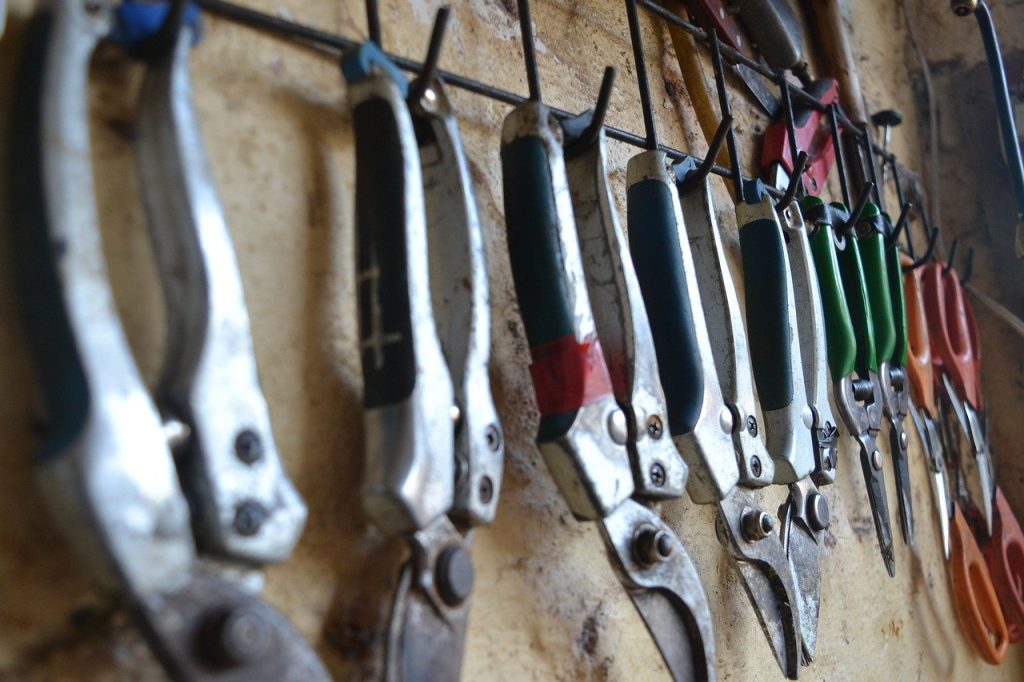
It’s important to use the right tools on your plants. When trimming your shears should be sharp, and clean. Photo: Fabio Ribeiro / Pixabay
Prepare your tools. You’ll need a good pair of pruning shears. A sharp pair of sewing scissors will also work. Be sure they are clean and dry. Use rubbing alcohol to clean the blades.
Use a spray bottle with water, with a couple of drops of Ivory dish soap and a gentle cloth so you can gently wipe the tops and bottoms of the leaves to clean off dust, pests, and debris. This is a smart regular practice – so make it a monthly habit starting this fall. Carry a trash bag to gather trimmings and dispose of them responsibly.
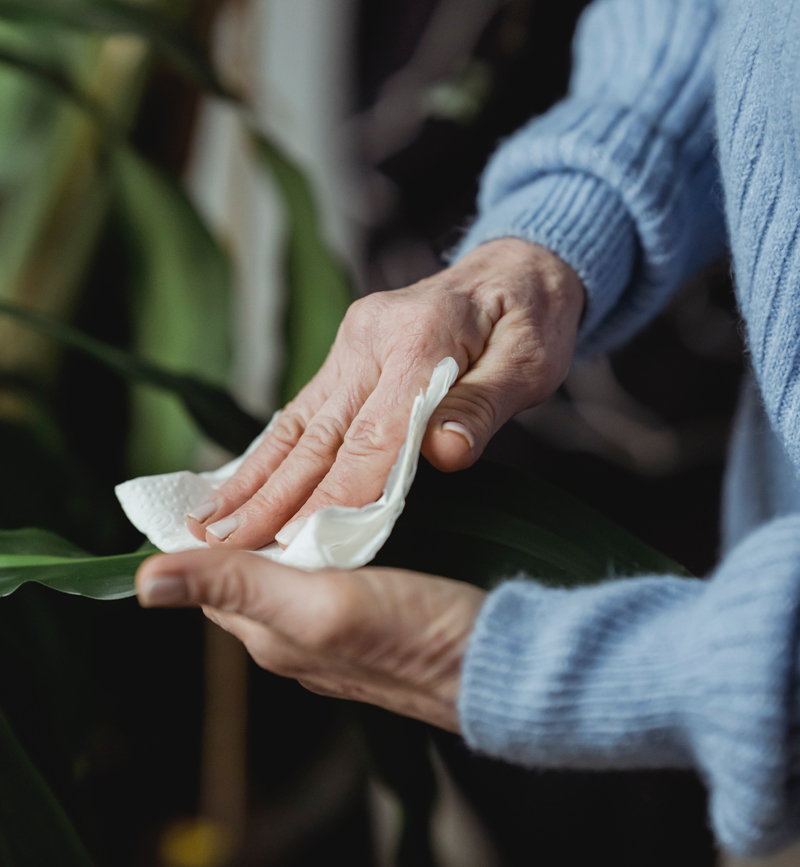
To keep plant leaves free of dust, you can GENTLY wipe the leaves with a cloth to keep them clean. Photo: Teona Swift
Pruning helps your plants. Pinching using your thumb nail gives you a green thumb. Removing dead growth or leaves damaged by pests or disease is bare minimum maintenance. Cut as close as possible to the base of a brown or yellow stem. Look for a leaf node. These are bumps on the branches or stems. New growth starts at these nodes.
If only a few leaves are brown or yellow, it’s ok to gently pull them off without removing the whole stem. But if you have a lot of yellow leaves, you need to address the cause, or you’ll end up with more yellow leaves. The usual suspects: too little sunlight or overwatering. Read our popular blog post with Watering 101 advice.
Remove any fallen leaves on the soil. These are pest and mold condos.
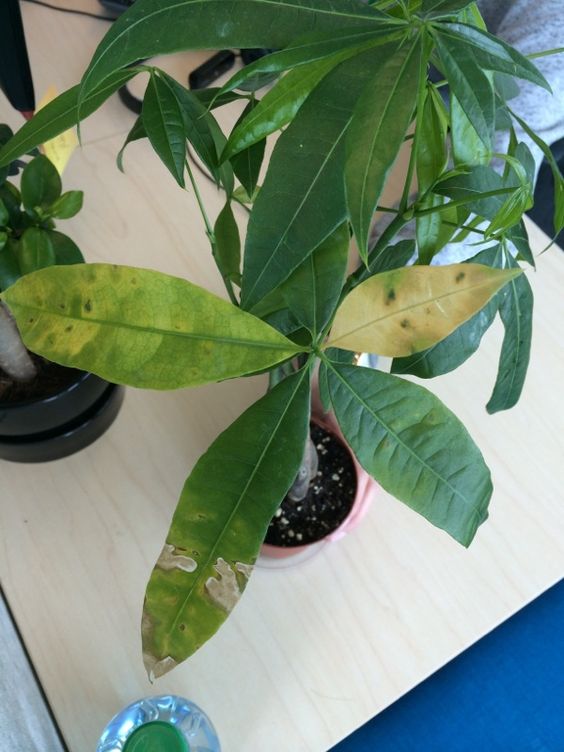
The leaves of this Schefflera show symptoms of many possible health problems. Photo: Pinterest/Garden Answers
Trimming helps control the direction a plant grows. When you cut back growth in one direction, it encourages your plant to promote growth in a different direction.
Take a look at the natural growth pattern of the plant. Shorten straggly long stems and branches to the closest leaf node. You should be able to draw a line down the middle of the plant from any angle and have an even balance of plant material on both sides.
If you are taking out large stems completely, cut as close to the main stem as possible or to the base of the plant.
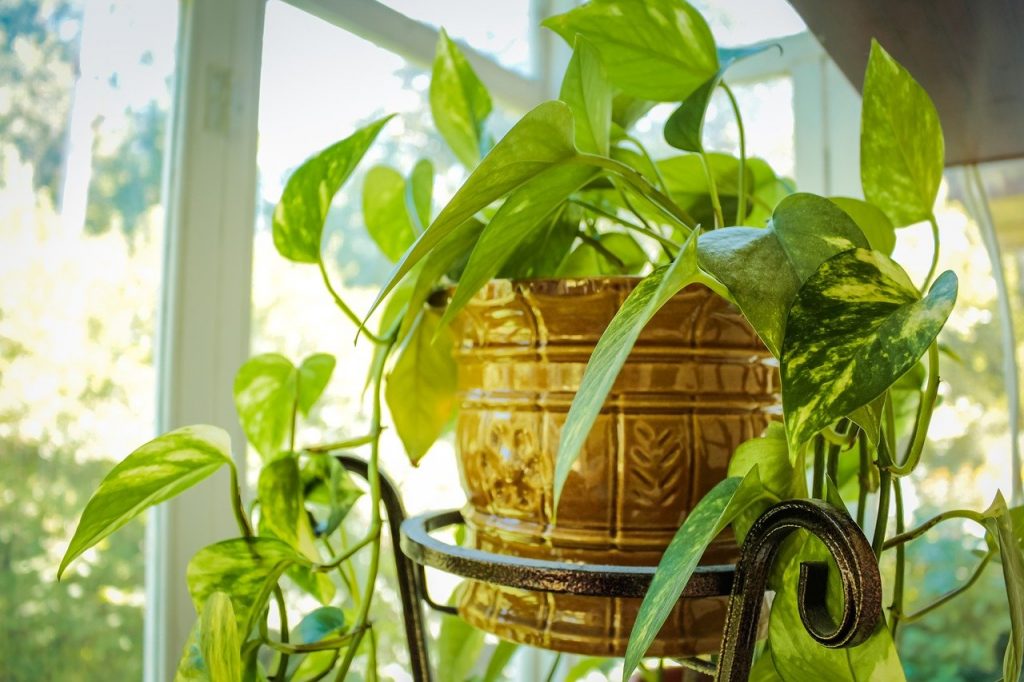
Trim leggy plants like this pothos, and you can replant the cuttings to create new plants. Photo: Photoshur / Pexels
For popular trailing plants like pothos or ivy, cut back longer individual vines, about four to six inches each.
Don’t Overdo It!
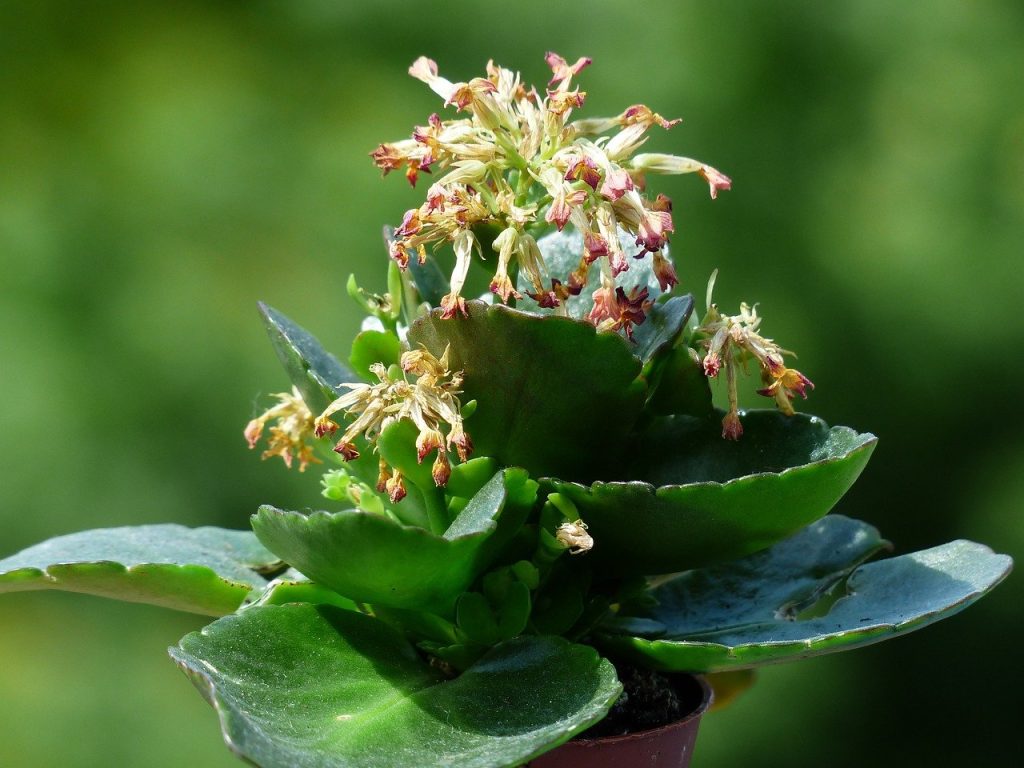
When you see blooms turning brown and dying off, remove them to encourage fresh growth. Photo: Pixabay
No buzz cuts for your indoor plants, please! Remove no more than 20 percent of the plant overall when you prune. If you need to cut back more, do it in stages. Make your first trim, wait a few weeks, and return for a second pass. Otherwise, your plant will try to protect itself and shut down any growth.
Pruning is different than “deadheading.” Deadheading means removing blooms when they begin to brown and die. Flowers consume energy from the plant. Removing flowers past their prime helps your plant send energy toward healthy growth, including more flowers during spring and summer.
Save your healthy indoor plant cuttings. Many can be re-grown. Place the stem ends into a cup of water, and they will grow roots. You can plant them, and come next spring, you will have brand new indoor plants. If you have succulents, they are even easier to propagate. You can break off a “leaf, wait a day or so for the cut to dry, and stick it into moist, warm soil, and a new succulent will sprout. Yay, free plants! This is an excellent science lesson and a fun project for kids. You might cultivate a new horticulturalist along with a new plant.
Time to Take A Winter Break
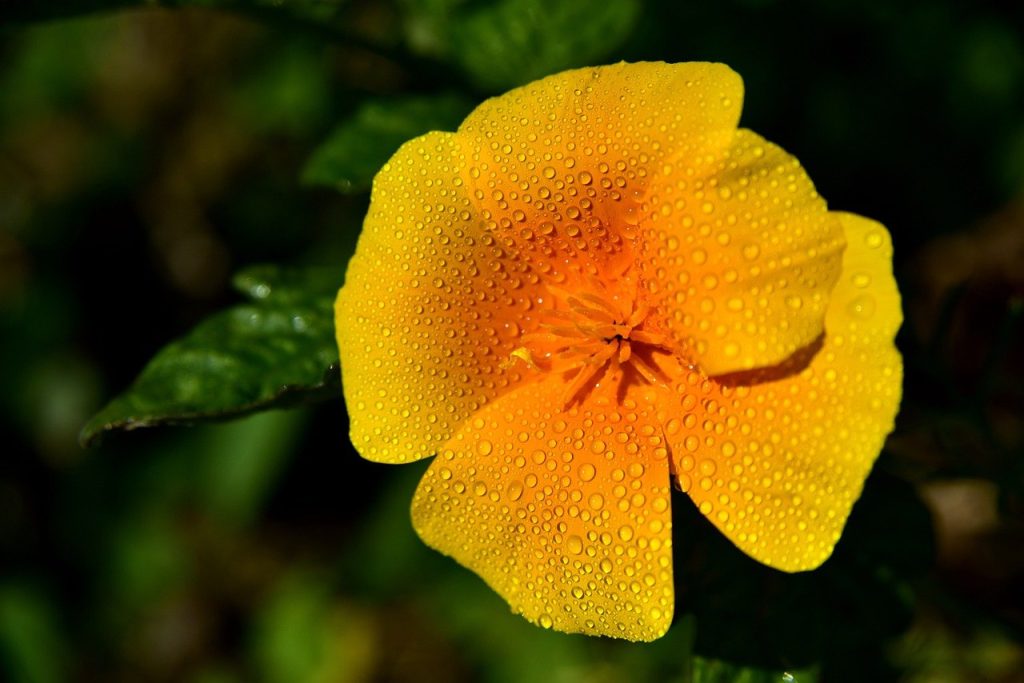
Enjoy the chaging season and fall colors, like this gorgeous poppy. Photo: Ulrike Leone
Avoid fertilizing your indoor plants after pruning them. You may also want to cut back on watering.
There are a few exceptions. Most varieties of orchids don’t like being pruned. Remove dead leaves only. Keep them watered, and you should see them bloom again next year.
It’s not a good idea to repot your indoor plants at the same time you trim them. It’s a LOT of stress for your plant to handle. Let your plant rest for several weeks. Consider waiting until early spring. Hint: cool new containers make GREAT holiday gifts.
Do you need help from the pros? Call on Good Earth Plant Company. We love to enrich your life with plants, and we will make sure your plants always look their best year-round. We’re just a call or email away at 858-576-9300 or info@goodearthplants.com.

